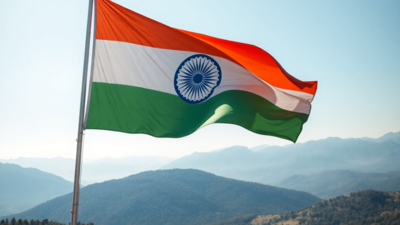
We live in an age of unprecedented complexity. Technology has woven a dense web of interconnected systems, globalisation has blurred geographical boundaries, and the daily volume of information bombarding us can be overwhelming. To worsen matters, a lot of information presented is unvalidated/inaccurate opinions, or pure fabrications falsely presented as “facts”.
It requires strong critical thinking skills to discern truths from falsehoods, especially when it is disseminated by our peers. And the evidence suggests this is too hard for most people. Bad information is very similar to Ultra-Processed Foods (UPF); delicious (because it supports our biases and opinions), addictive (because it arouses emotions), and ultimately destructive (because it erodes core values, logic, and common sense).

Bad data adds significantly to the complexity of our world, by creating divisions and wasting resources countering the misguided opinions of misinformed people. Paradox As societies strive for food security, the technical, social, and economic strategies devised become increasingly complex over time. This creates a curious paradox: the very solutions designed to address such major problems often generate new, larger issues that require even more complex solutions.
Collapse Joseph Tainter, in his 1988 book, The Collapse of Complex Societies , explored thousands of years of human history to derive a plausible framework for understanding this paradox. He argued that as societies evolve, they tend to become more complex in their structures and processes. This complexity, initially beneficial, can reach a tipping point where the costs of managing it outweigh the benefits, leading to diminishing returns and vulnerability to collapse due to over-complexification.
Environmental cost of complexity The impact of complexity on the environment is undeniable. Due to technological advancements and industrialised agriculture, our food systems have shifted from local and seasonal production to intricate global networks. This transformation has led to several detrimental consequences: Resource depletion: Intensive farming practices that rely on chemical fertilisers, herbicides, pesticides, growth factors, and antimicrobials boost short-term production but deplete soil health, pollute water sources, and contribute to biodiversity loss and dangerous antimicrobial resistance.
In short, the very systems designed to feed a growing population are eroding the ecological foundations upon which they depend. Ultra processed foods often dominate supermarket shelves. — JEFF SIEPMAN/Unsplash Greenhouse gas emissions: The global food supply chain generates vast quantities of greenhouse gases through transportation, refrigeration, and processing.
Food packaging requires millions of tonnes of plastics annually, which also generate greenhouse gases during their production. Plastics: The vast amounts of plastics used by food supply chains eventually decompose into harmful/toxic micro- and nano-plastics, contaminating land, water and air for thousands of years. Already such compounds directly or indirectly affect the health of millions of people while causing genetic deformities and extinctions of countless species of wildlife.
Waste problems: Approximately 55% of agricultural food calories are intended for human consumption; the remainder is used for livestock feed, biofuels, or left to lie fallow. Of the amount designated for human consumption, between 33% and 50% is wasted via spoilage or non-consumption, especially in some Western countries. Such food waste also contributes to climate change through the emission of vast amounts of methane from rotting foods.
Loss of biodiversity: The pursuit of high-yielding crop varieties has led to a narrowing of the genetic base in agriculture. Monoculture practices, favoured for their efficiency, have reduced the diversity of crops grown, making them more susceptible to pests, diseases, and climate change. This loss of biodiversity weakens the resilience of ecosystems and threatens long-term food security.
Technologies and systems initially designed to solve problems like food security have now created new, potentially more severe problems. These titanic new complexities have unintended, probably unmanageable, consequences that will affect our environment and health far into the future. Complexity and diets Complexity also reaches into our dinner plates and dietary options.
Modern diets, bombarded with choices and conflicting information, reflect the over-complexification of the food landscape. Nutritional confusion: We are inundated with staggering volumes of confusing and contradictory dietary advice, frequently provided deliberately by sponsored sources. This situation leads to “paralysis by analysis” which makes it much more difficult to discern healthy choices.
Loss of connection with food: The intricacies of modern food systems obscure the origins of food. UPFs, often stripped of their natural nutrients and laden with additives, dominate supermarket shelves. This disconnect from the sources of our foods makes it challenging to assess their true nutritional value and environmental impact.
Complexity may even be disguised as “convenience”, for example in the form of “ready meals”, further distancing processed foods from the raw ingredients. Modern food systems dilute the connection to food. - WALLACE CHUCK/Pexels Economic reality: It is no coincidence that the most attractive, tastiest foods available in the shops are also often the poorest in nutrition terms.
Modern food production prioritises attractive, inexpensive UPFs simply because they are the most profitable. This can oddly increase people’s dependency on such cheap foods, as more nutritious (eg, organic) items would appear to be expensive by comparison, and therefore not perceived as “value for money”. Illusion of choice: While seemingly offering limitless options, our true food choices are restricted to a narrow range of products controlled by large agribusiness corporations.
These corporations are entirely driven by profit, efficiency and standardisation, leading to a homogenisation of food offerings and a reduction in true variety. Therefore, the illusion of “limitless choice” is achieved via inexhaustible marketing and packaging tricks. This masks a system where a handful of companies dictate what we eat, and in some cases, what we are even allowed to eat.
In short, the systems originally designed to provide abundance and food security have created a complex profit-driven, environmental, and restrictive nutritional landscape fraught with extreme challenges to our health and well-being. Outcomes of complexity The outcomes of complexity stem from several interconnected factors: Diminishing returns: As Tainter observed, complexity follows the law of diminishing returns. This means that at a certain threshold, complexity turns from an asset into a liability.
In the context of food systems, this means additional investments in technology, infrastructure, and inputs may not yield proportional returns. For example, keeping costs competitive involves constantly changing processes, upgrading machinery, and/or using cheaper, newer ingredients/additives in processed foods. These added complexities may accrue more profits for the producers initially (until the next upgrade) but may have knock-on health effects on consumers due to poorer nutrition.
Such health issues may cost more to treat than the short-term profits made by the producers and may result in more complexity and disruption to health services. Interdependence and vulnerability: The intricate web of interconnections within complex systems creates vulnerabilities. Disruptions in one part of the system can cascade throughout, leading to chaotic consequences.
This interdependence is evident in global food supply chains, where single events can impact food availability and prices elsewhere. Recent examples are the severe global supply shortages caused by the Covid-19 pandemic and the war in Ukraine. In short, complexity breeds fragility: the more interconnected the system, the more susceptible it is to disruptions.
Loss of control: As systems become more complex, they become harder to manage and adapt. The sheer volume of technical information and the interconnectedness of processes can overwhelm decision-making processes. This loss of control is evident in the seeming impossibility of implementing effective global policies to address environmental issues caused by food production, despite knowing about such issues for many decades.
No accountability: The huge agribusinesses controlling the world’s production and supply of cooking ingredients and UPFs have contributed to the current pandemic of metabolic syndrome. Yet due to complexity, it is not possible to identify any entities responsible for why approximately 1.4 billion people currently have, or will likely develop, diseases such as diabetes, cardiovascular disorders, liver diseases, cancers, etc, because of their diets.
Dealing with complexity – Part 1 Recognising that complexity is inherent in modern life is crucial, even if people often do not perceive it. Look at the shelves of a supermarket. Practically none of the items are reproducible at home.
And even if we want to, we can never reproduce the irresistible “mouth feel” textures and delicious flavours of processed foods, because we do not have the blend of selected ingredients, chemicals/additives, and complicated industrial equipment needed to produce such consistently uniform foods. Simplifying food choices can make for better diets. NUZUL ARIFA/Pexels All we see is the convenience of easy access to enticing foods wrapped in polluting plastics, often produced using synthetic compounds we would never choose to have at home, and shipped from dour factories where most people would not want to work.
Dealing with complexity – Part 2 The opposite of complexity is simplicity, and pursuing simplicity may help address some of the issues. Incentivising simplicity: Simplifying our food choices allows us to regain control over our diets and reduce the environmental burden of food production. This involves reducing reliance on global suppliers, shortening supply chains, and prioritising whole, unprocessed foods.
Wherever possible, buy wholesome foods from local farmers and small producers to support and incentivise them to keep on producing good food. Transparency and education: Understanding food systems, nutrition, and sustainable practices is important. This involves transparency in food labelling, clear dietary guidelines, and public education initiatives.
It is critical for people to understand the connections between food, health, and the environment. Informed consumers can then make choices that benefit both their well-being and our planet. Adaptability and resilience: Building resilience into food systems requires adaptability from businesses and governments.
This involves diversifying production methods, promoting local food systems, and implementing flexible policies which respond effectively to changing conditions. In short, prepare to circumvent current complexity by having simpler alternative plans to manage disruptive events such as pandemics, wars, and climate change. The views expressed here are entirely the writer’s own.
.















